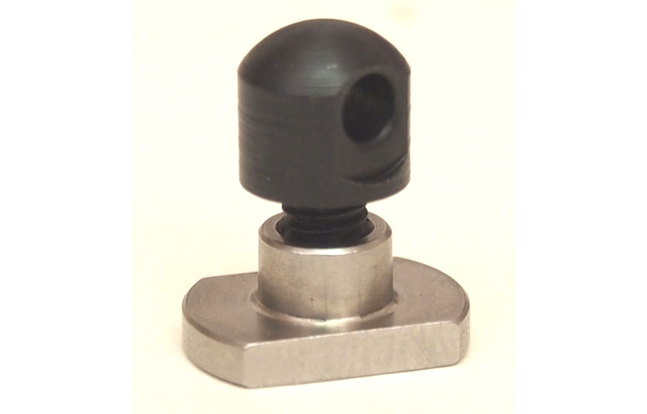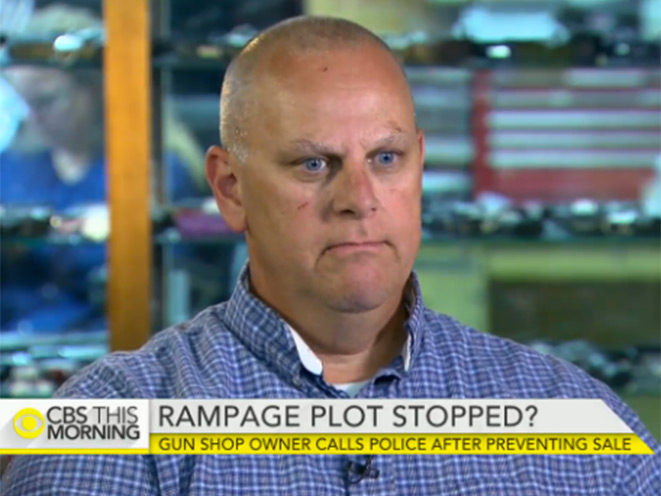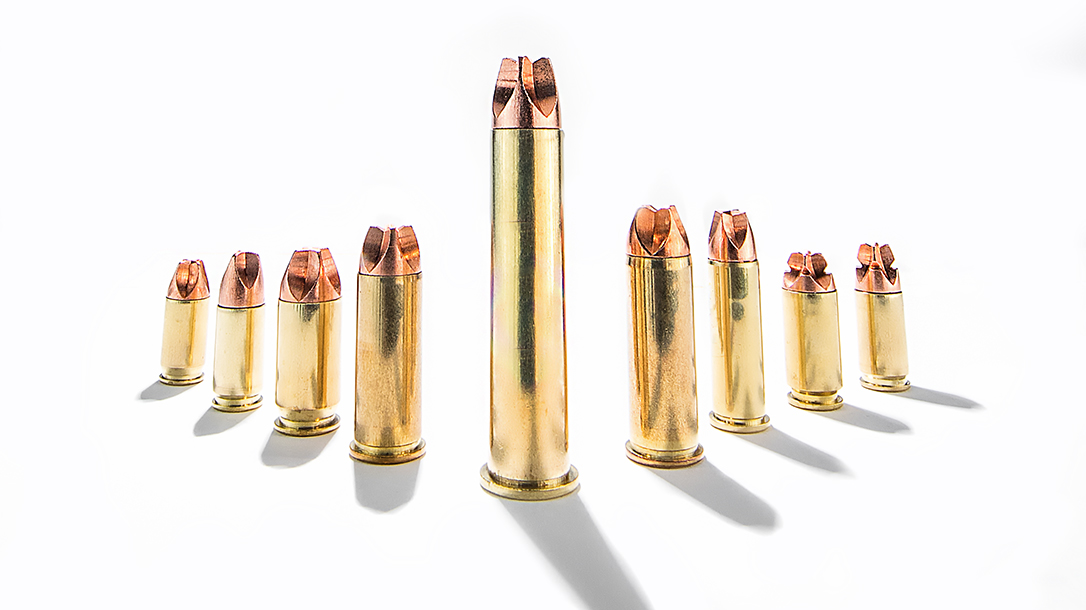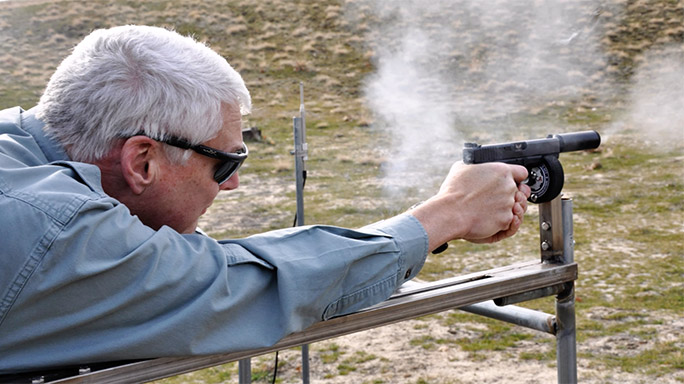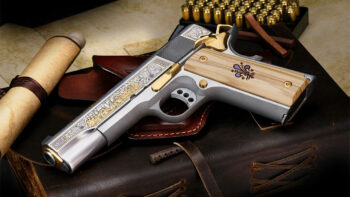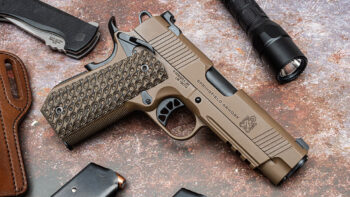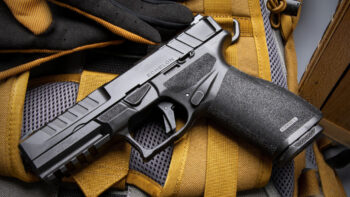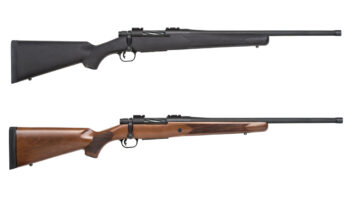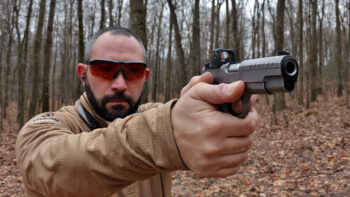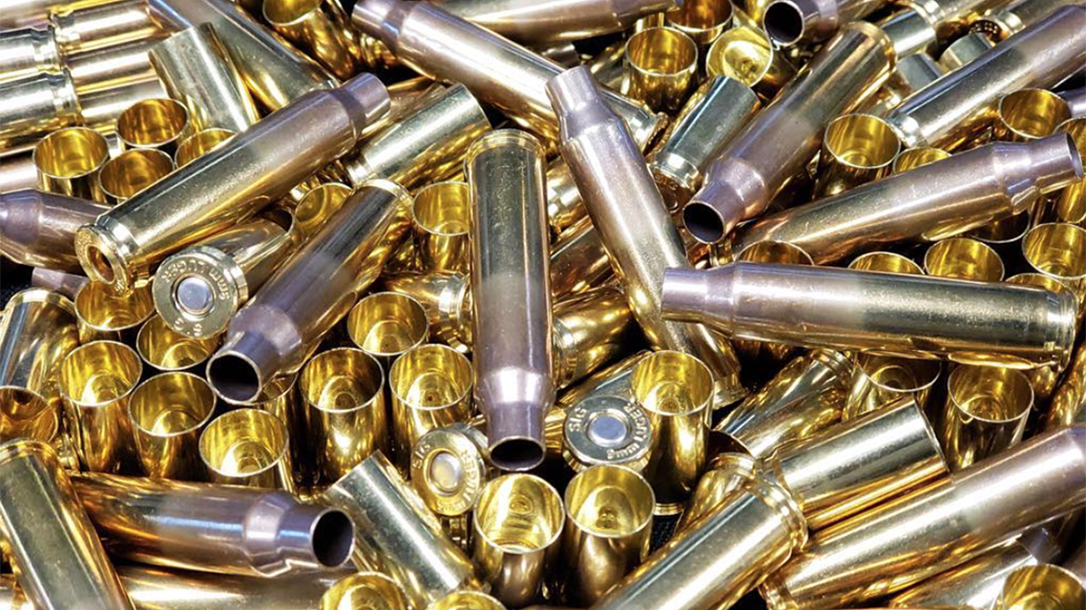One of my favorite things to see and shoot at the Athlon Outdoors Rendezvous event was all the suppressors. Suppressors have become a big deal within the firearms industry recently thanks to the E-File system. We all know it still isn’t great. But so many shooters bought guns during the pandemic, now many consumers want to explore the accessory market. However, with so many suppressors to choose from, which can is right for you? Well this list runs down the best suppressors seen for 2023 at the last Rendezvous.
Best Suppressors at Athlon Outdoors Rendezvous
Rugged Suppressors Alaskan360
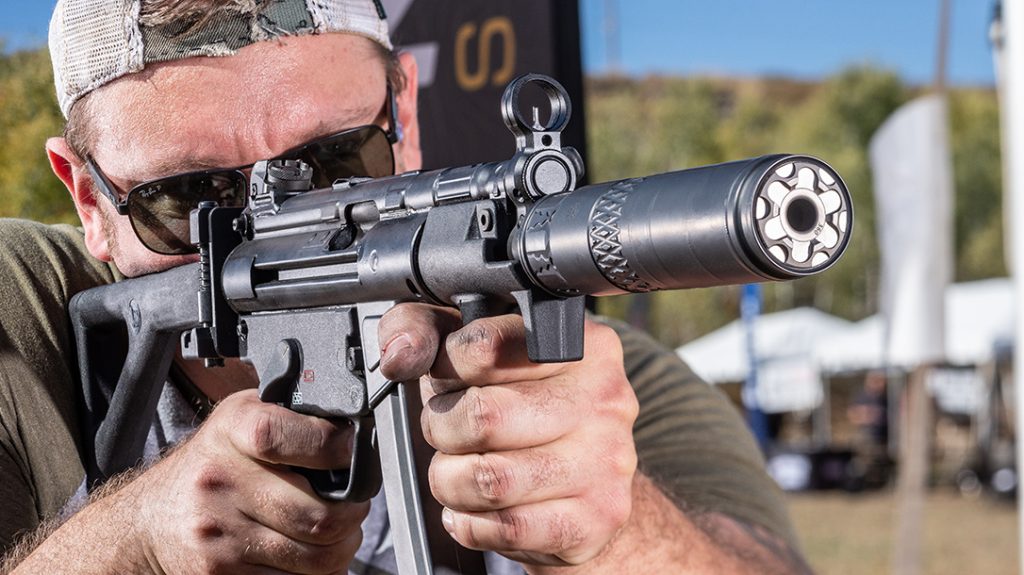
The first can on my list that impressed me was the Rugged Suppressors Alaskan360. I discovered this lightweight, multi-caliber suppressor while actually shooting unsuppressed in a booth next to Rugged. They had a giggle switch on an MP5, and I thought for sure it was a .22 LR version because of the tone of the Alaskan360. The suppressor is designed to handle hard days on the range, backcountry adventures and anything in between. The Alaskan360 provides outstanding flexibility with its full-auto rating for pistols and sub-guns up to 9mm and can even handle rifles up to .338 Lapua.
The can uses the Rugged Universal Mount, or R.U.M., which offers back-end modularity by allowing the Alaskan360 to work with all Rugged rifle mounts, as well as some industry-standard mounts. The mount is built from US Grade 5 Titanium and is one of the lightest on the market, and when combined with the Alaskan360’s aluminum build, the suppressor weighs only 11.8 ounces. The Rugged Alaskan360 has an MSRP of $1,099. (ruggedsuppressors.com)
SilencerCo Switchback 22
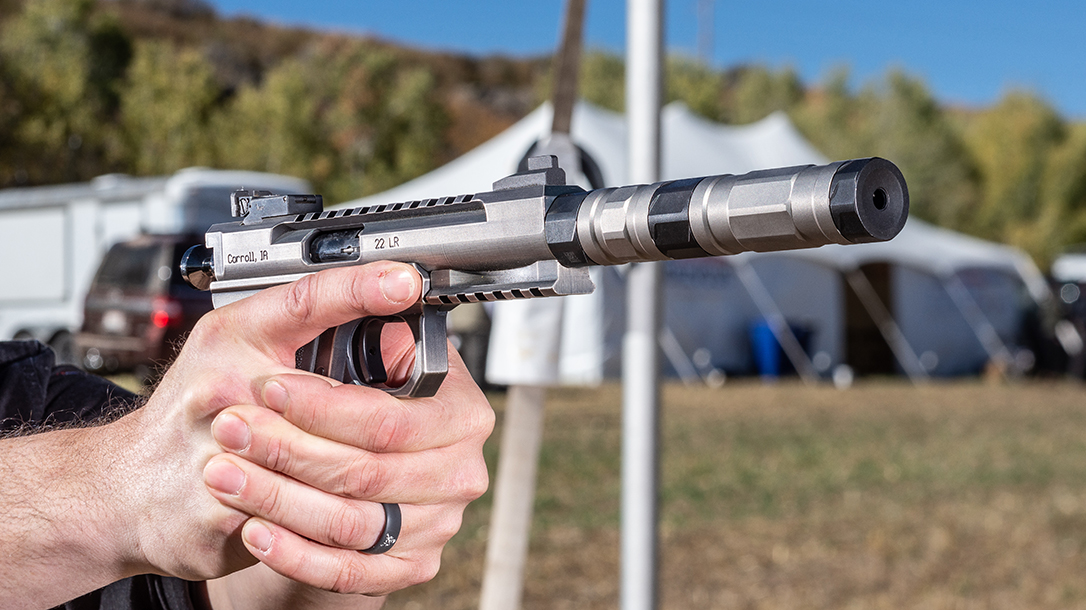
The next can on my list was a small, extremely versatile suppressor from SilencerCo. The Switchback 22 is a performance based rimfire suppressor. The can is modular and lightweight, with unmatched sound reduction. The user can choose from four distinct lengths and is compatible with .22 LR, .22 WMR, .22 Hornet, .17 HMR, .17 WSM, and 5.7x28mm. The Switchback 22 is constructed of two titanium tubes that interface through the use of a connecting stainless steel baffle. It features stainless steel baffles internally, which utilize SilencerCo’s Click Together Assembly (CTA) design. You can run the can in the short configuration, which is only 2.5 inches long and weighs only 3.2 ounces, the medium configuration that is 3.59 inches in length, weighing 4.3 ounces, or the long configuration, which utilizes all the baffles for a total length of 5.75 inches, weighing 6.5 ounces.
The fourth configuration is what SilencerCo refers to as rifle optimized. It is the same as the longer configuration, however, you turn your front baffle stack backwards, giving you unprecedented sound reduction on long barrel rifles. The can only has an MSRP of $540. (silencerco.com)
SilencerCo Hybrid 46M
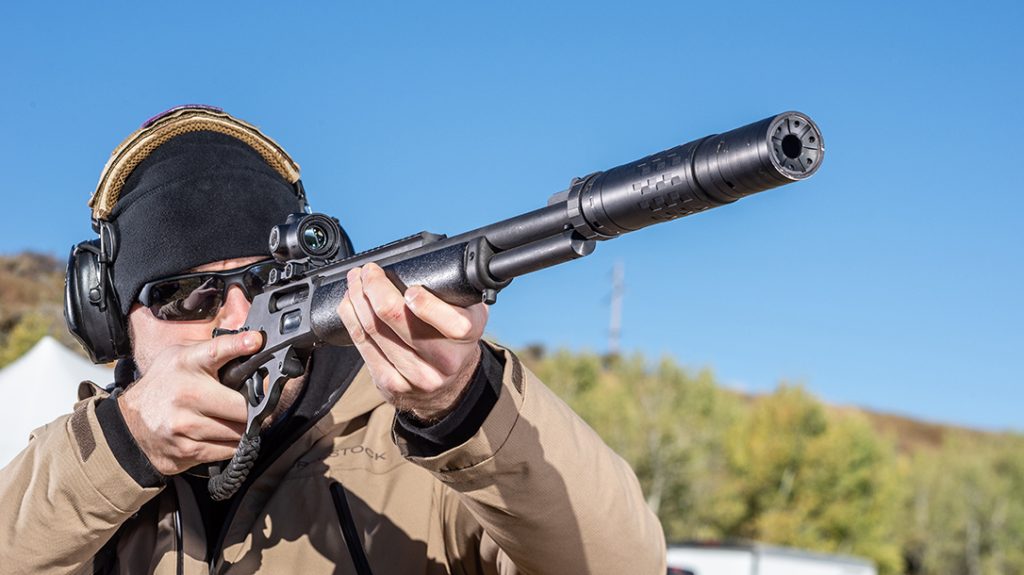
At that same booth I spotted another modular can that I was very familiar with, the iconic Hybrid 46. I personally already owned an original Hybrid 46, so I was excited to see an updated version that was now modular, making the multi-caliber can even more versatile. The Hybrid 46M is a light, compact, and modular centerfire rifle suppressor with the versatility to use on most rifles, pistols and sub-guns. The SilencerCo Hybrid 46M allows for the removal of a front module, which provides the shooter with a shorter and lighter suppressor body still capable of effectively suppressing all centerfire pistol cartridges as well as rifle offerings as large as .45-70 Govt and .458 SOCOM.
The Hybrid 46M comes rated for centerfire pistol and rifle cartridges, including .45 Auto, 10mm, .450 Bushmaster, .458 SOCOM, .45-70 Govt, .338 Lapua Magnum and up to .460 Weatherby Magnum. The best part of this 17-4 stainless steel, titanium and Iconel constructed suppressor comes in the full-auto rating in all configurations. The Hybrid 46M comes in with an MSRP of $1,169 and utilizes all of the SilencerCo muzzle devices and mounting options. (silencerco.com)
PWS BDE 762
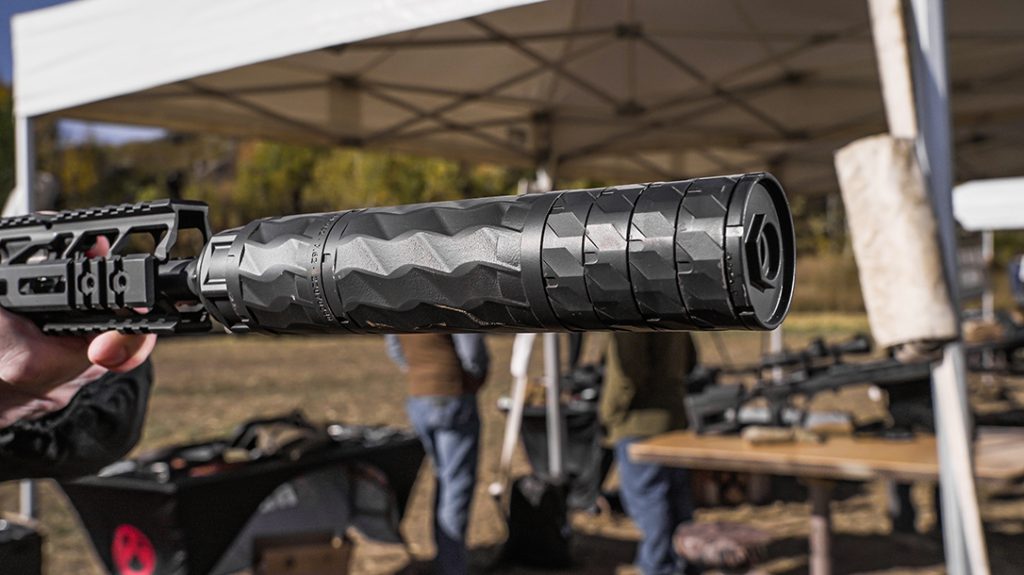
A new player to the suppressor game takes the next spot on my list, Primary Weapons Systems, and their brand new, unique, 3D printed titanium BDE 762 suppressor. BDE stands for Bravo Delta Echo. The titanium 3D printing process results in probably the most aesthetically pleasing can that you will find at any range. Manufactured with aerospace-grade titanium, which is lighter and stronger than traditionally machined titanium, the modular can configures into a short, 6.5-inch length that weighs only 12.7 ounces. Meanwhile, the long configuration measures 8.2 inches and weighs a bit more at 17.4 ounces.
Both lengths are hearing safe with all calibers and uses a universal 1.375×24 TPI pattern for compatibility with most suppressor mounts. The suppressor probably ran the hardest out of any other can that day and held up well even when it reached extreme temps from a few quick mag dumps out of some SBRs. The BDE has an MSRP of $1,099.95. (primaryweapons.com)
Dead Air Silencers Sierra-5 Xeno
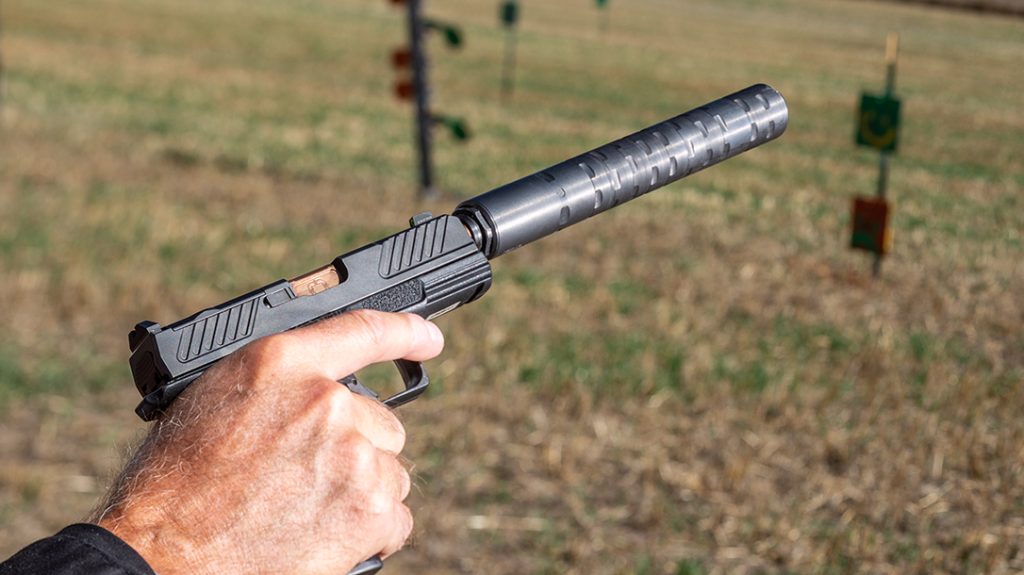
The next can comes in my favorite chambering, 5.56mm. The Dead Air Silencers Sierra-5 Xeno offers you everything you want out of a dedicated 5.56 silencer and more. This can is designed as a hard-use silencer, meaning it is built to take a beating and keep on functioning. It is not your show can that attracts gawkers at the range. You can bash this one into the wall, bounce off the floor, and heat up with some full-auto mag dumps. It is not a safe queen. The Dead Air Sierra-5 Xeno comes full-auto rated with absolutely no barrel length restrictions.
Love or hate the design and knurling, it’s function over form with this workhorse. The can uses a winning combination of welded Stellite baffles wrapped in a stainless outer tube. The beast weighs 13.3 ounces with an overall length of 5.72 inches with the Xeno mount installed. The Sierra-5 Xeno includes a 1/2-28 Xeno flash hider and a Xeno adapter. This isn’t the quietest can in the world on the end of an AR-15, but its ability to take be used and abused puts it in a special place for me. The suppressor has an MSRP of only $859 and is backed by Dead Air’s lifetime warranty. (deadairsilencers.com)
SilencerCo Sparrow 22
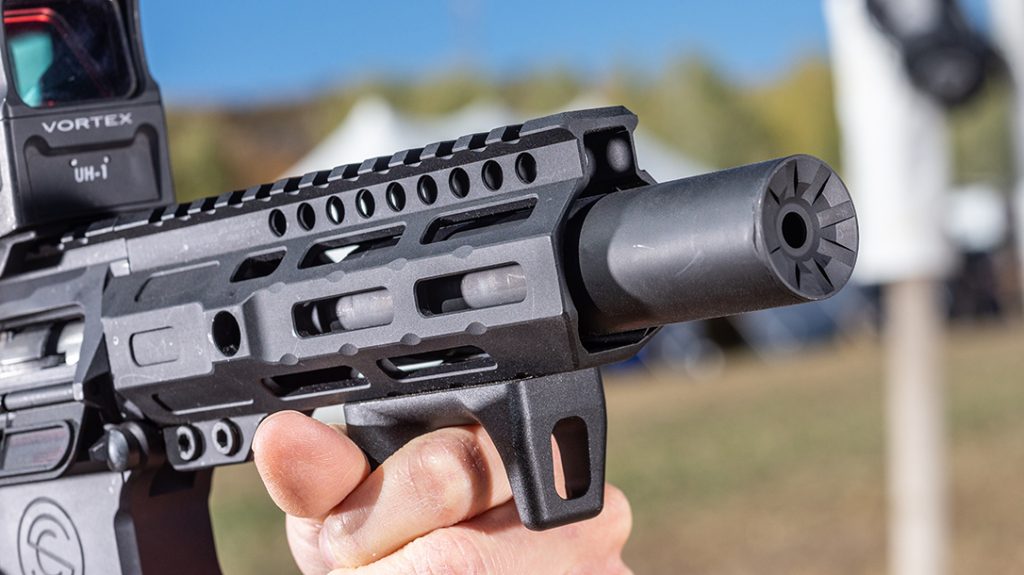
I personally love shooting suppressed .22 LR, so naturally I had to check out the SilencerCo Sparrow 22. I am happy to report, the can lives up to the hype. The Sparrow 22 design gives the shooter the best experience possible in all aspects. Simplicity, durability, and user serviceability are all captured in this iconic rimfire offering. Using MPC technology, the Sparrow 22’s monocore is encased in a split-tube that keeps any fouling or lead build up from reaching the outer tube. This prevents internal seizing of the core to the outer tube and ensures ease of disassembly for cleaning and maintenance. Let me tell you, this design does work as well.
The representative from SilencerCo took the suppressor off the pistol it was living on after who knows how many rounds shot. It proved shockingly easy to break down. Honestly, it was incredible. The Sparrow 22, full-auto rated, reduces the sound signature of all .22 LR, .22 Mag, 17 HMR, 17 WSM and FN 5.7×28 ammunition–well below safe hearing levels. The can is only 6.1 ounces and measures just over 5 inches in length and with an MSRP of only $349. You really can’t beat it. (silencerco.com)
Rugged Suppressors Obsidian 9
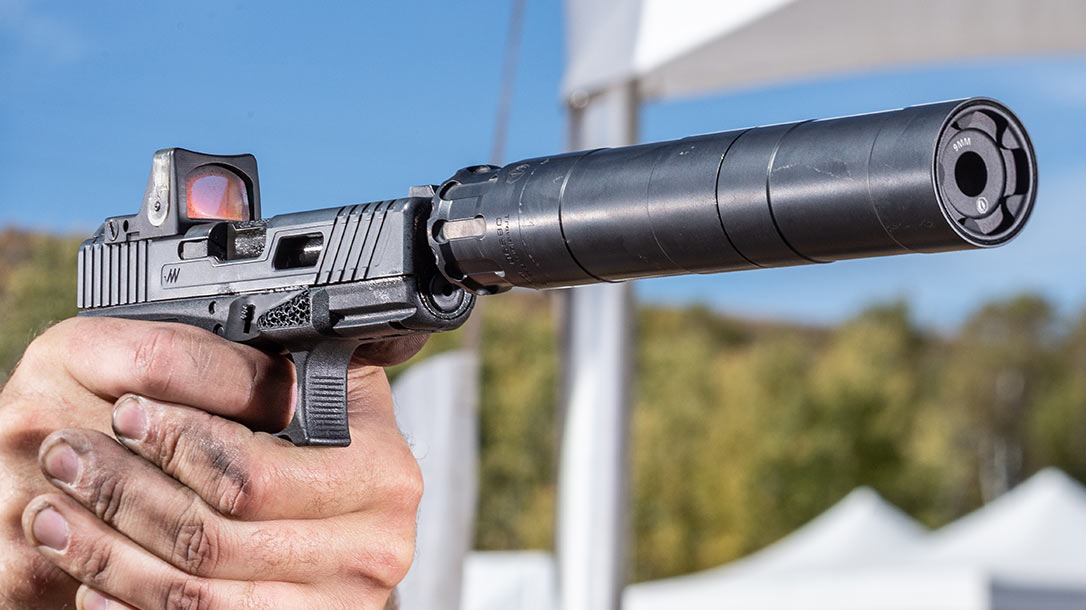
I shoot a lot of 9mm pistols, and I will be completely honest here. I really am not a big fan of suppressed pistols other than .22s. That all changed when I grabbed a pistol at the Rugged Suppressors booth that had the Obsidian 9 mounted to the front of it. I was immediately impressed with the lack of splash back like I am so used to getting out of a suppressed pistol. This is thanks to Rugged’s design of the can being completely optimized for 9mm while staying light and compact. The ADAPT Module gives you two lengths in one suppressor, for maximum suppression or weight/length savings.
The can only weighs 12.7 ounces and stands 7.8 inches in length in the standard configuration and 4.85 inches long and only 8.7 ounces in the short configuration. With a diameter of 1.37 inches, the Obsidian 9 is compatible with pistol suppressor sights, making it perfect for pistols or sub-guns. The MSRP comes in at only $820, making it a fantastic choice for a 9mm can. (ruggedsuppressors.com)
Silencer Central Banish 45
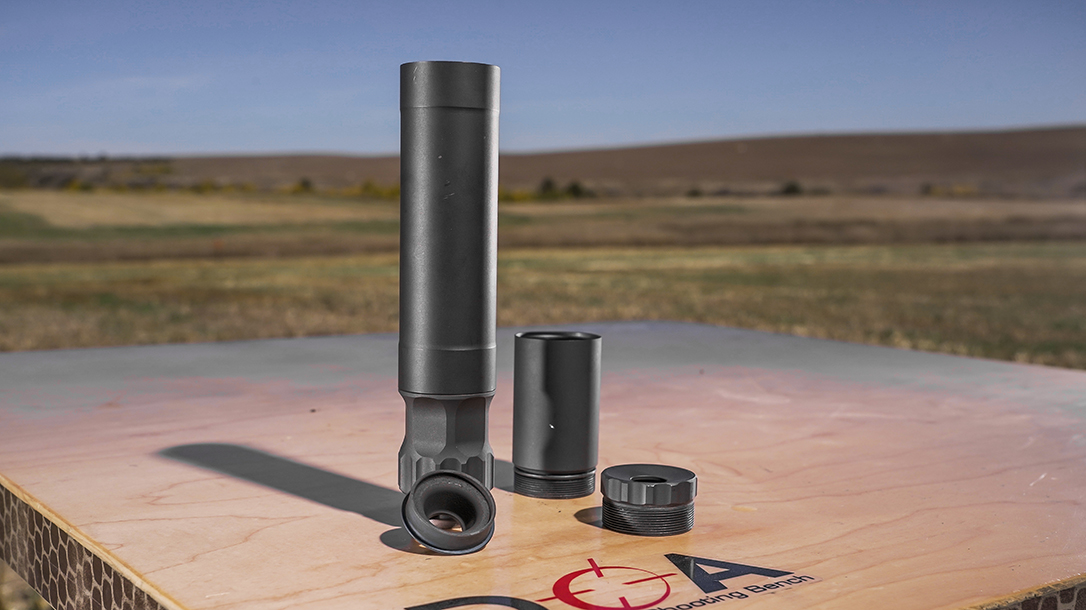
One other company that had some impressive stuff was Silencer Central. One can that really stood out to me was their Banish 45. The suppressor works with calibers ranging from .45 ACP down to rimfire. A modular pistol suppressor, the Banish 45 is compatible with many different pistols, ensuring the one can will cover many needs. Made with Titanium for the ultimate combination of durability and weight reduction, the Banish 45 is the lightest in its class at a mere 9.6 ounce in the short configuration of 6.7 inches. You can also run it in the long configuration of 8.6 inches and still barely notice it’s on your gun because it weighs only 11 ounces. It is crazy how well it functions while being as lightweight as it is.
Because of the Banish 45’s modular design, you can run it with eight or 12 baffles, depending on your specific needs. User-serviceable from both ends, this suppressor can be easily and quickly disassembled for configuration changes and cleaning. You can easily clean the baffles by hand with a brush and your favorite solvent. Reassembly is just as easy, thanks to the keyed and indexed baffles. This guarantees that each one will be lined up perfectly for optimum performance. The Banish 45 comes in with an MSRP of only $949. (silencercentral.com)















